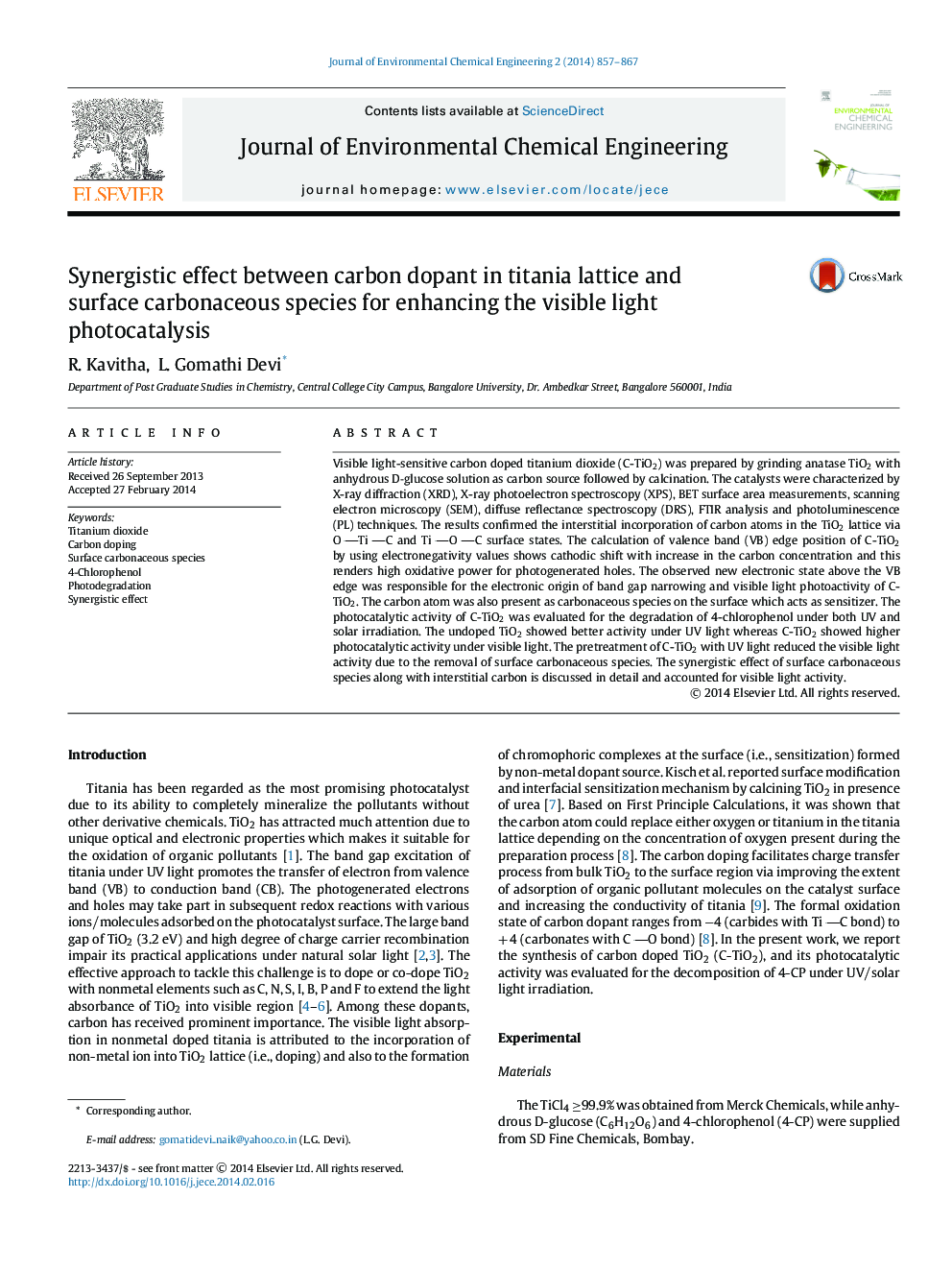| کد مقاله | کد نشریه | سال انتشار | مقاله انگلیسی | نسخه تمام متن |
|---|---|---|---|---|
| 221747 | 464265 | 2014 | 11 صفحه PDF | دانلود رایگان |
• Synergy between interstitial carbon dopant and surface carbon in TiO2 is discussed.
• The presence of surface carbon is confirmed by UV pretreatment of C-TiO2.
• The thickness of space charge layer depends on dopant concentration.
• Increase in carbon concentration leads to cathodic shift of valence band edge.
• Photoluminescence studies show minimum charge carrier recombination for C-TiO2.
Visible light-sensitive carbon doped titanium dioxide (C-TiO2) was prepared by grinding anatase TiO2 with anhydrous D-glucose solution as carbon source followed by calcination. The catalysts were characterized by X-ray diffraction (XRD), X-ray photoelectron spectroscopy (XPS), BET surface area measurements, scanning electron microscopy (SEM), diffuse reflectance spectroscopy (DRS), FTIR analysis and photoluminescence (PL) techniques. The results confirmed the interstitial incorporation of carbon atoms in the TiO2 lattice via OTiC and TiOC surface states. The calculation of valence band (VB) edge position of C-TiO2 by using electronegativity values shows cathodic shift with increase in the carbon concentration and this renders high oxidative power for photogenerated holes. The observed new electronic state above the VB edge was responsible for the electronic origin of band gap narrowing and visible light photoactivity of C-TiO2. The carbon atom was also present as carbonaceous species on the surface which acts as sensitizer. The photocatalytic activity of C-TiO2 was evaluated for the degradation of 4-chlorophenol under both UV and solar irradiation. The undoped TiO2 showed better activity under UV light whereas C-TiO2 showed higher photocatalytic activity under visible light. The pretreatment of C-TiO2 with UV light reduced the visible light activity due to the removal of surface carbonaceous species. The synergistic effect of surface carbonaceous species along with interstitial carbon is discussed in detail and accounted for visible light activity.
Figure optionsDownload as PowerPoint slide
Journal: Journal of Environmental Chemical Engineering - Volume 2, Issue 2, June 2014, Pages 857–867
